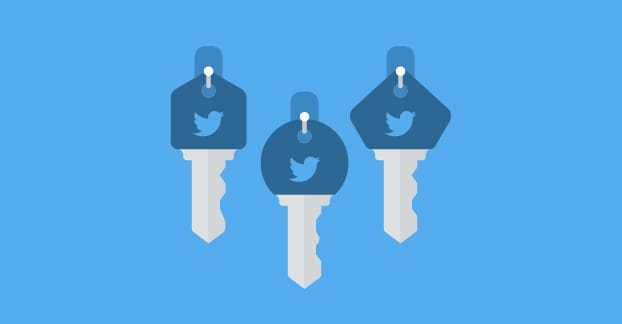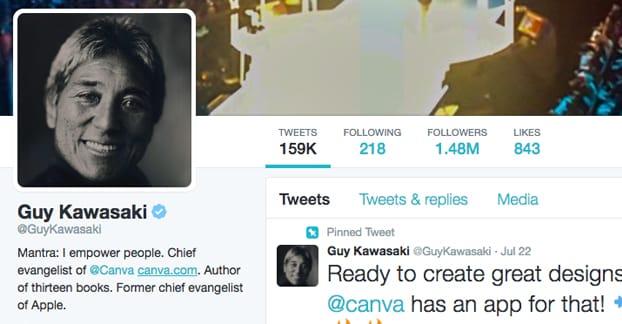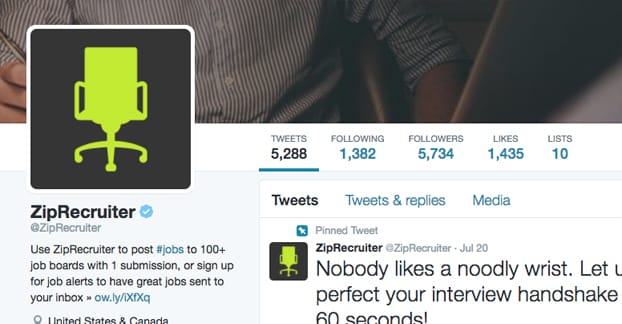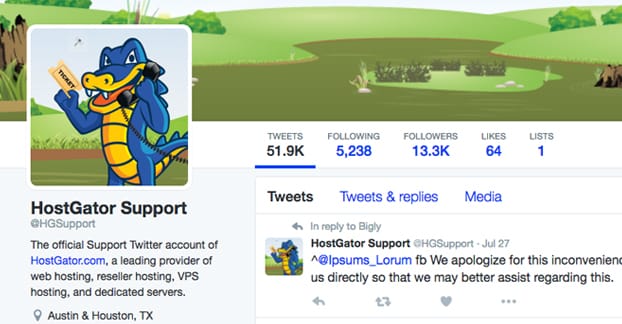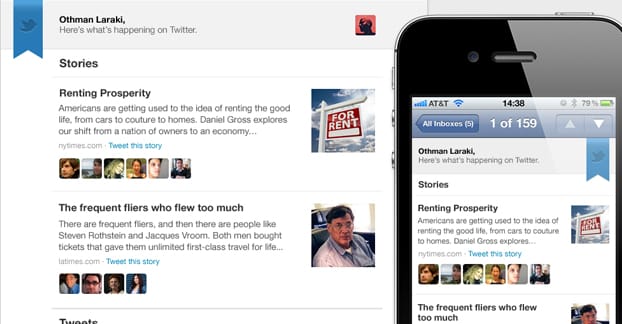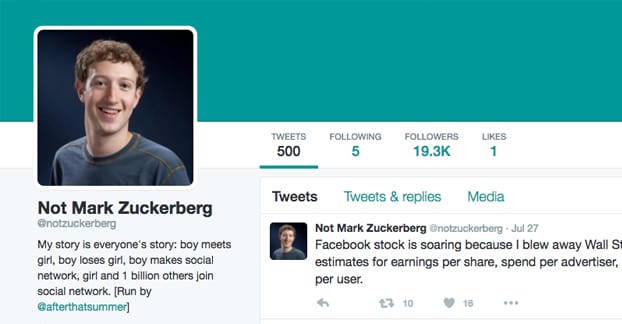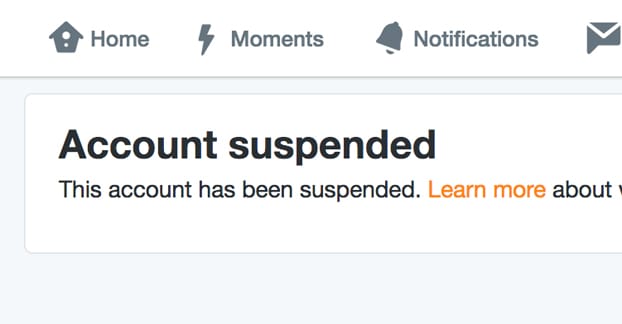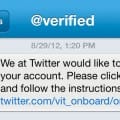This is a surprisingly common question given that it’s a very common practice. Are you allowed to have more than one Twitter account? The answer is yes. So many brands, businesses, and individuals have secondary and tertiary accounts that it would be strange for Twitter to ban the practice. Of course, just because something is done, doesn’t mean it’s allowed. In this case, however, it certainly is.
“Yes one person can have multiple Twitter accounts – a Twitter account doesn’t even necessarily need to be “owned” by a human being.”
You can see this with the number of bot-run accounts out there, like MuseumBot, CongressEdits, and EveryWord. Those accounts are owned by the people who made the bots, and those people very frequently have Twitter accounts of their own.
So, rather than dig into the legalities of making more than one account, I’ll give you a few ideas of accounts you could make.
Before we begin, though, there’s one thing you need to consider, and that’s the amount of work you need to put in to managing more than one account. In many cases, you want your accounts to have disparate enough purposes that they aren’t treading on the same ground. Ideally, you want to be able to hand off the responsibility if need be. This is why many secondary accounts tend to be service-oriented, so they don’t need to actively engage and work to post.
Good Ideas
The first section of the post is dedicated to the good reasons you might have to make a secondary account. Or, rather, the good reasons to have an account in general. Chances are you already have one of these if you’re asking about it in the first place:
A Personal Account
This is the most common reason people make accounts on Twitter. Personal accounts, made to enter contests, to share stories of your day, to get into political activism, or what have you, are common. I would say that it’s easily one of the top three types of accounts on Twitter, though you have to discount the accounts that have never tweeted and were just made either to follow brands or to enter contests.
If you have a different kind of account and want to make a personal account, there’s nothing to stop you. In fact, by informing followers of your other account of the existence of your personal account, you can get a head start on followers and engagement. One of the most common instances of this I’ve seen is when a brand’s owner creates their own account and promotes it. Second to that is the bot account advertising who created it.
A Brand Primary Account
Second to personal accounts are brand accounts. Companies have accounts for their businesses. These accounts generally share updates about the company, updates about their products, announcements of maintenances and downtimes, alerts, and other such practical information. They also share blog posts and, ideally, share and comment on content from other brands. There’s a lot of work that goes into running a brand account, and this isn’t the place to talk about it.
I’ve seen businesses search for new employees on Twitter, promote their individual employees and their achievements, and even poke fun at one another.
Accounts for Individual Websites
This is one of the most common causes for a secondary account if you ignore the top two being two sides of the same coin. Generally, entrepreneurs will make a personal account for themselves, then they’ll make accounts for each of their individual brands. For example, if I owned BrandA and BrandB, I might have three Twitter accounts. One would be my personal account, one would be the BrandA account, and one would be the BrandB account.
This gets messy the more websites you have. If you’re trying to build up a social media presence for a large number of sites, you’re going to run out of steam very quickly. The fact is, it takes a lot of work to run a good Twitter account. Therefore, a lot of entrepreneurs use their small brand accounts as little more than RSS feeds, while the real meat happens in their primary personal account.
A Customer Service Account
Any business of suitable size should have a customer service account, in my opinion. Small businesses run by one person who can manage it all by email or chat don’t necessarily need one, but then, they can handle it through direct messages on their main account. Once you reach a sufficient size, you end up with too many notifications and too many messages on your main brand account. You need a dedicated customer service account.
Thankfully, it’s easy enough to create and manage such an account. You can use one of the many Twitter management tools to do most of the work for you, but you have the advantage of keeping all of the information and all of the metrics in one place. It’s easy to see what sort of volume of tickets you get and how well you’re helping people out when it’s all kept in one place, isolated from your marketing.
Regional Franchise Accounts
This one generally only applies to franchise businesses that have a lot of individual, local branches. Banks could do this, but generally banks prefer to have one central authority. The most common entities I see using these accounts are individual restaurants, generally smaller chains with a half dozen or so mostly independent locations. The idea is that each one can have some degree of autonomy, but they all need to have a certain level of uniformity and messaging from the corporate headquarters.
Most large national brands don’t go with the franchise account method simply because it’s a lot of work. They have to entrust responsibility for their social media presence to a whole lot of individual people who may or may not be any good at it. Then when any one of them does something wrong or gets their account compromised, it reflects badly on their entire operation.
An Experimental Bot
I linked a handful of bots up at the top of this post, but that’s just a small fraction of the number of bots out there. I’ve seen everything from procedurally generated text experiments, to Microsoft’s ill-fated Tay experiment, to responsive bots that tweet airline information back to people interested in getting such information.
The trick with bots is that there’s a limit on how you can use them. Twitter has some strict rules on automation and the use of bots on their site, which you can read here. You generally need to be doing something unique and valuable, rather than something potentially abusive or something that circumvents the Twitter terms of use.
A Content Digest Account
I mentioned these as something small businesses do when they have too little resources to apply to managing a social media account, and frankly, I’m not a huge fan of them. The trouble is, they’re just too boring. When following your Twitter account and following your RSS feed are functionally identical, you’re missing out on a ton of value you could be getting from Twitter.
However, if it’s a choice between a content digest feed and nothing at all, I would still go with the digest. It’s a starting point, and it can still rack up some followers, though it won’t do you many favors when it comes to engagement or conversions. The thing is, it establishes a history of Twitter usage, which you can broaden when you have more resources.
An Industry Curator Account
This, by contrast, is a very similar account with a much broader appeal and the potential for a lot more value. I might create something like “The Daily SEO” and monitor the top SEO blogs I know about. When a new post is created on one of those sites, I would promote it via that account for free. I can, of course, promote my own content in the stream of other content, and it fits right in.
The main value of this account is that it pulls in value from a wide variety of sources, and thus attracts all of them as influencers who will boost your presence. If you’re a quality digest, by which I mean a digest that doesn’t post everything that comes along, you can gain quite a lot of influence.
Then, if you want to sell out once you’ve obtained a high enough following, you can set up a submission process for sites you aren’t currently monitoring, where they pay you to be considered for the feed.
A Parody Account
Parody accounts are on the good list, but only if you do them properly. It’s tricky to do a parody account in a way that doesn’t cross the line from humorous parody into actual harassment or abuse.
On the good end of the spectrum, you have accounts like Not Mark Zuckerberg, which pokes fun at social media and Facebook specifically. Emo Kylo Ren takes the teenage angst of the Star Wars character and turns it up to 11 in 140 characters or less. They’re generally humorous and fun, and they don’t insult, harass, or demean individuals or groups of people.
On the other end of things, you have accounts like Biii Murray, an attempt to be humorous like Bill Murray without actually being funny in any way. The fact that it has half a million followers is depressing. That’s not even getting into the actual abusive accounts, which I’m not going to link for obvious reasons.
Parody can be excellent for growth on Twitter, but it can also be a great way to wreck a reputation or get yourself banned.
Bad Ideas
There are also bad reasons to open additional Twitter accounts. If you’re contemplating adding another, and one of these is your reason, you should probably re-evaluate what you’re doing on the site.
An Account to Circumvent a Ban
The first reason people tend to open accounts (when they shouldn’t) is to circumvent their banning on a different account. It’s not like you’re pulling a fast one over on Twitter. They can see your user agent, location, and IP address (among other information) so they know who you are.
Even if they don’t ban your second account right away, it’s still probable that they will find and ban you eventually. Of course, at least part of that is because the kinds of people who get themselves banned can’t resist being themselves, and it’s more their attitude and the kind of things they post that gets them removed.
An Account to Anonymously Harass
This one should just be common sense, and I doubt the people reading this post are going to be the same kinds of people who want to harass or trash talk people on the internet behind a curtain of anonymity, because I believe my audience has more morality and more scruples than that. Still, some people do it; they make secondary accounts in order to harass people they don’t like. Most of the time either they’re ignored, blocked, or suspended, and that’s the end of that.
An Account to Duplicate Another
This can be used both malicious and unintentionally. I’ve seen businesses see that their Twitter account is doing well and attempt to open up another to duplicate the success. They don’t realize that all they’re doing is casting doubt on the veracity of the accounts, and they’re causing a loss of trust. Plus, it’s not like they’re reaching an entirely separate audience; they’re just reaching the same people who already follow them.
On the malicious end, someone copying the account of a brand and trying to impersonate them is an abuse method used by scammers to try to either ruin the reputation of a business or steal the information of their followers. Obviously, it’s not a good idea.
Accounts to Boost Engagement Artificially
This is perhaps the most common; people make legions of bot accounts and use them to mass follow, mass retweet, and mass like posts made by other accounts. They sell these services, in a way that undermines natural growth and sucks money out of budget-tight small businesses.
There are two problems with this. First, they’ll be banned, inevitably, when Twitter discovers what they’re doing. It won’t be hard, either; Twitter has algorithms that detect mass movements that herald bots. Secondly, it can result in stronger sanctions on the site, including harming your actual business on the side.
